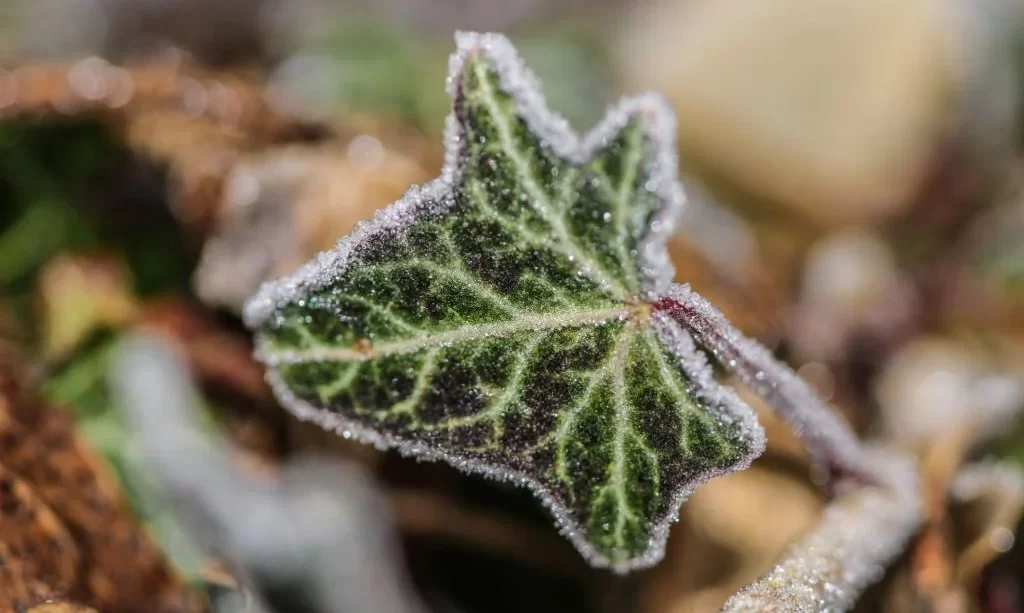Ivy, with its lush green foliage and trailing vines, is a beloved and iconic addition to gardens, landscapes, and architectural facades around the world. This resilient and versatile vine has charmed gardeners for centuries, thanks to its ability to thrive in a variety of conditions and its reputation as an evergreen plant. However, as the chill of winter approaches, a question often arises among gardening enthusiasts and curious observers: Does ivy truly remain verdant and vibrant throughout the winter months, or does it undergo transformations in response to the cold embrace of winter?
- Hardy in zones 4-8. Deer resistant
- Grows in sun or shade
- Proper name: Hedera helix ‘Baltic’
- Considered the hardiest English Ivy
- The plants you will receive are growing in 2.25″ pots // from Jmbamboo
Ivy – A Versatile and Resilient Vine
Ivy, belonging to the genus Hedera, encompasses a diverse group of climbing and trailing plants known for their hardiness and adaptability. These plants are treasured for their ability to enhance the beauty of both natural and man-made landscapes. Ivy’s versatility is showcased in its use as ground cover, wall-climbing foliage, and ornamental accents.
One of the standout qualities of ivy is its adaptability to different climates and growing conditions. With various species and cultivars to choose from, gardeners can find ivy varieties suitable for sun-drenched locations or shady corners. Their resilient nature allows them to thrive in various soil types and withstand periods of neglect.
As we delve deeper into the mysteries of ivy’s winter behavior, it becomes clear that this plant’s reputation as an evergreen marvel may not hold true for all its species and varieties. Understanding the complexities of ivy’s response to winter conditions is key to appreciating its year-round allure in the garden.
The Myth of Evergreen Ivy
While ivy is often celebrated for its year-round greenery, the reality is more nuanced than the myth of evergreen ivy suggests. Not all ivy species and varieties remain perpetually green, especially during the colder months. This common misconception arises from the widespread association of ivy with lush, green walls and vibrant ground cover. However, a closer look reveals that there’s more to ivy’s winter story.
Deciduous Ivy Varieties
In the world of ivy, some varieties are deciduous, meaning they naturally shed their leaves in the autumn. Unlike their evergreen counterparts, deciduous ivy species go through a seasonal leaf drop as winter approaches. This process is a survival strategy to conserve energy and reduce water loss during the colder months. While deciduous ivy may lose its leaves in the winter, it often redeems itself with fresh growth in the spring, a testament to its resilience.
Ivy’s Winter Behavior
Ivy’s winter behavior largely depends on several factors, including the specific species or variety, climate, and local conditions. Evergreen ivy varieties, such as English ivy (Hedera helix), can indeed maintain their green foliage throughout the winter in milder climates. However, in colder regions, even evergreen ivy may experience some degree of winter browning, especially if subjected to harsh frosts and freezing temperatures.
Deciduous ivy varieties, as mentioned earlier, shed their leaves as part of their natural cycle. This leaf drop can reveal the intricate patterns of ivy vines on walls and structures, adding an artistic dimension to winter landscapes. Moreover, ivy’s woody stems and vine structure often persist, lending structural interest to the garden even when the leaves are absent.
Understanding how ivy responds to winter is essential for gardeners and admirers of this versatile vine. The next sections will further explore ivy’s winter behavior and provide insights into its resilience and care during the colder months.
Winter Damage and Recovery
During the winter, ivy may face various challenges that can lead to damage. Exposure to severe cold, frost, and icy conditions can cause browning or discoloration of leaves. Additionally, heavy snow accumulation can weigh down ivy vines, potentially causing them to detach from their supports. However, it’s essential to recognize that ivy is remarkably resilient.
In the spring, as temperatures rise and daylight hours lengthen, ivy often embarks on a journey of recovery. Deciduous varieties will start producing new leaves, while evergreen ivy may regrow and rejuvenate damaged foliage. Proper care, such as gentle pruning to remove damaged sections, can aid in the recovery process and help ivy regain its lush appearance.
Strategies for Protecting Ivy in Winter
To ensure your ivy thrives during the winter months, consider implementing protective measures. Mulching the base of ivy plants can insulate the roots and protect them from extreme cold. Additionally, providing windbreaks or temporary coverings during severe weather can shield ivy from harsh conditions.
Pruning is another valuable strategy. Trimming back excessive growth before winter can reduce the weight on supports and prevent structural damage caused by snow and ice accumulation. Careful pruning can also encourage healthy regrowth in the spring.
Regular monitoring of your ivy during the winter is crucial. Promptly address any damage or issues, and be patient as the plant’s natural resilience often leads to recovery when spring arrives.
- Scotts best mulch
- Color Guard keeps color lasting all year
- Apply around trees, shrubs, flowers, or vegetables after seeds have germinated and plants have developed
Conclusion: Unveiling Ivy’s Winter Secrets
In conclusion, ivy’s behavior during the winter months reveals a fascinating interplay between nature and resilience. While the myth of evergreen ivy is not entirely accurate, understanding the diversity of ivy species and their responses to winter conditions allows us to appreciate their unique beauty in all seasons.
Whether evergreen or deciduous, ivy adds character and charm to gardens and landscapes, even during the winter when its true nature is unveiled. By providing care and protection when needed, we can ensure that ivy thrives and continues to be a beloved and enduring presence in our outdoor spaces. Ultimately, ivy’s winter secrets enhance our connection to the natural world and the wonders of the changing seasons.






